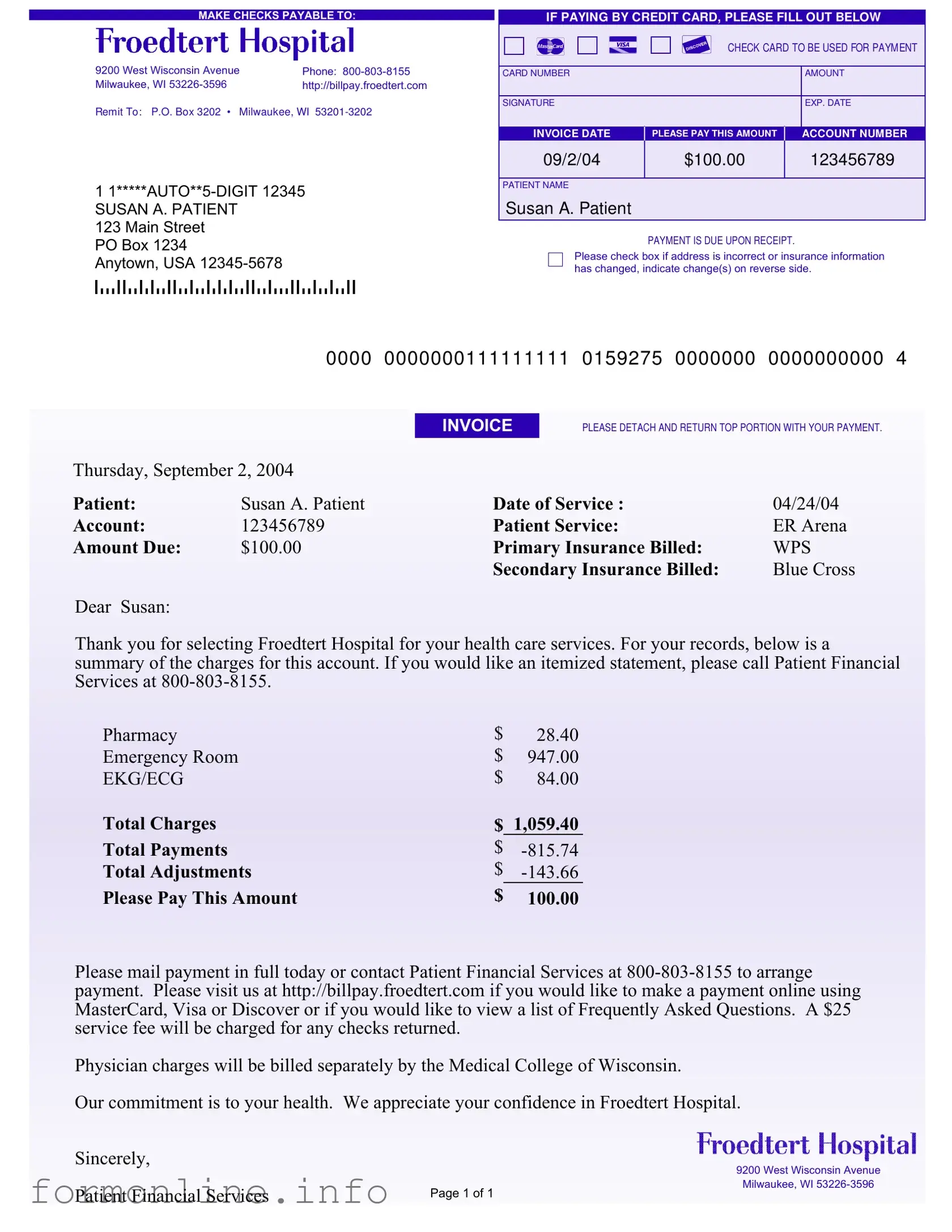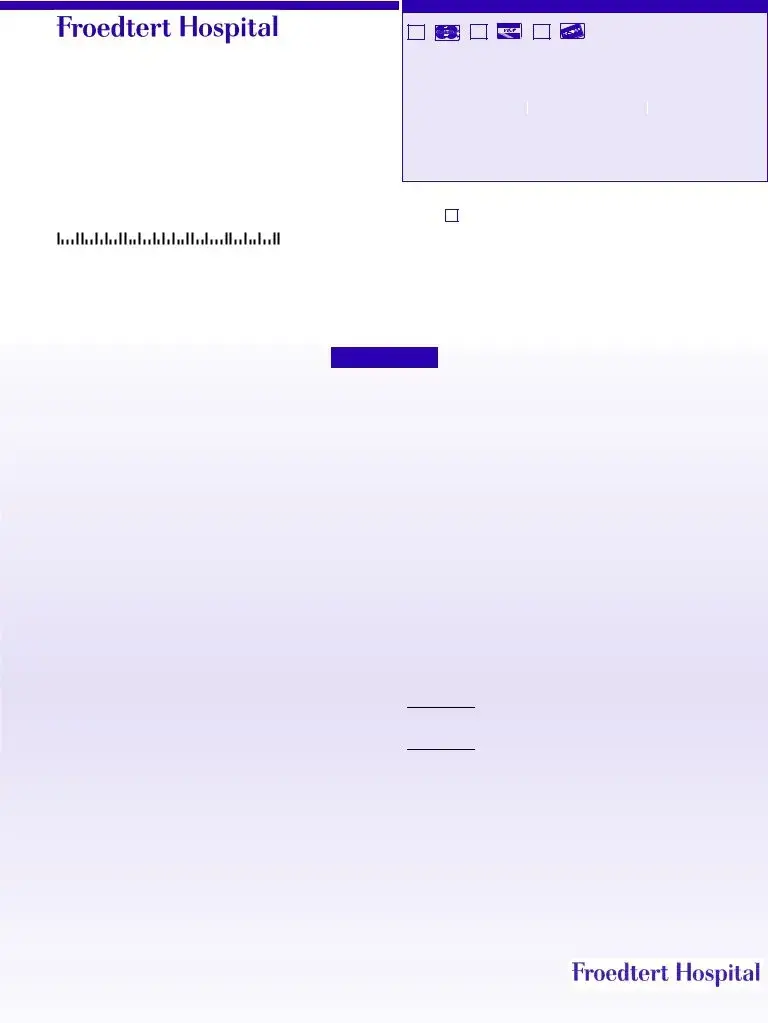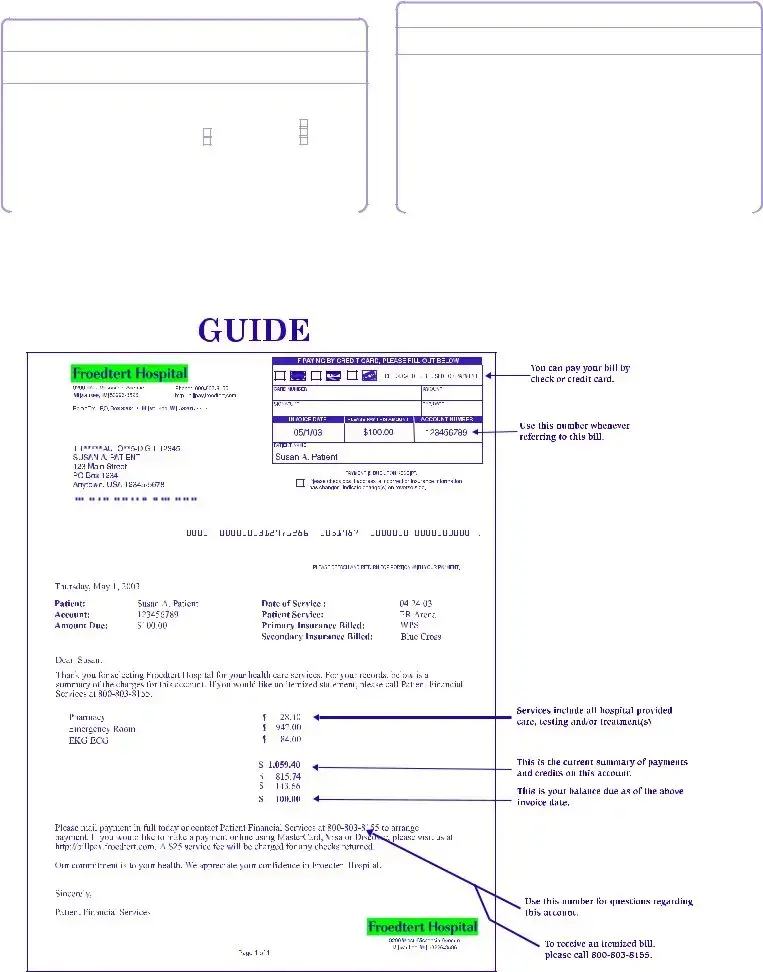The first document similar to the Hospital Bill form is the Medical Invoice. This document outlines the services provided to a patient, along with the associated costs. Like the Hospital Bill, it specifies the total amount due, payment options, and details about insurance coverage. Both documents serve the purpose of informing patients about their financial responsibilities after receiving medical care.
An Insurance Claim Form is another document that shares similarities with the Hospital Bill form. This form is used to request payment from an insurance company for medical services rendered. It includes information about the patient, the provider, and the services provided. Just as the Hospital Bill provides a summary of charges, the Insurance Claim Form details the same services but focuses on obtaining reimbursement from the insurer.
The Patient Statement is yet another comparable document. This statement provides a summary of a patient's account, including charges, payments, and any outstanding balance. Similar to the Hospital Bill, it serves as a reminder of what is owed and may include instructions for payment. Both documents aim to keep patients informed about their financial obligations regarding their healthcare.
A Prescription Bill is also related to the Hospital Bill form. This document details the costs associated with medications prescribed to a patient. Like the Hospital Bill, it includes information about the patient and the total amount due for the medications. Both documents emphasize the importance of timely payment for services rendered.
The Explanation of Benefits (EOB) is another document that bears resemblance to the Hospital Bill. The EOB is sent by an insurance company after a claim has been processed. It explains what services were covered, the amount billed, and the patient's financial responsibility. Much like the Hospital Bill, it provides clarity on what the patient owes after insurance has contributed.
A Payment Plan Agreement is similar in that it outlines the terms under which a patient can pay their medical bills over time. This document details the payment amounts, due dates, and total balance owed. Like the Hospital Bill, it is essential for managing financial obligations and ensuring that patients understand their payment responsibilities.
An Itemized Bill is closely related to the Hospital Bill form as well. This document breaks down each service provided, along with its corresponding cost. It offers a more detailed view of charges, similar to the summary provided in the Hospital Bill. Patients can use both documents to understand their financial situation better.
The Balance Due Notice is another document that resembles the Hospital Bill. This notice is typically sent to remind patients of any outstanding balances. It includes the total amount due and may provide payment options. Like the Hospital Bill, it serves as a prompt for patients to settle their accounts.
In addition to the documents mentioned above, understanding the role of the Ohio Motor Vehicle Bill of Sale form is essential for those involved in vehicle transactions. This form, necessary for the legal transfer of ownership, can be accessed at autobillofsaleform.com/ohio-motor-vehicle-bill-of-sale-form/, ensuring that buyers and sellers are aware of their rights and responsibilities during the sale process.
A Financial Assistance Application is also comparable to the Hospital Bill form. This document allows patients to apply for financial aid to help cover medical expenses. It requires similar information about the patient’s financial situation and insurance coverage. Both documents are aimed at ensuring that patients receive the care they need without undue financial burden.
Finally, a Collection Notice is similar in that it communicates the need for payment on overdue accounts. This document is often sent when payments are significantly past due. Like the Hospital Bill, it outlines the amount owed and may include options for settling the debt. Both documents stress the importance of addressing financial obligations in a timely manner.


